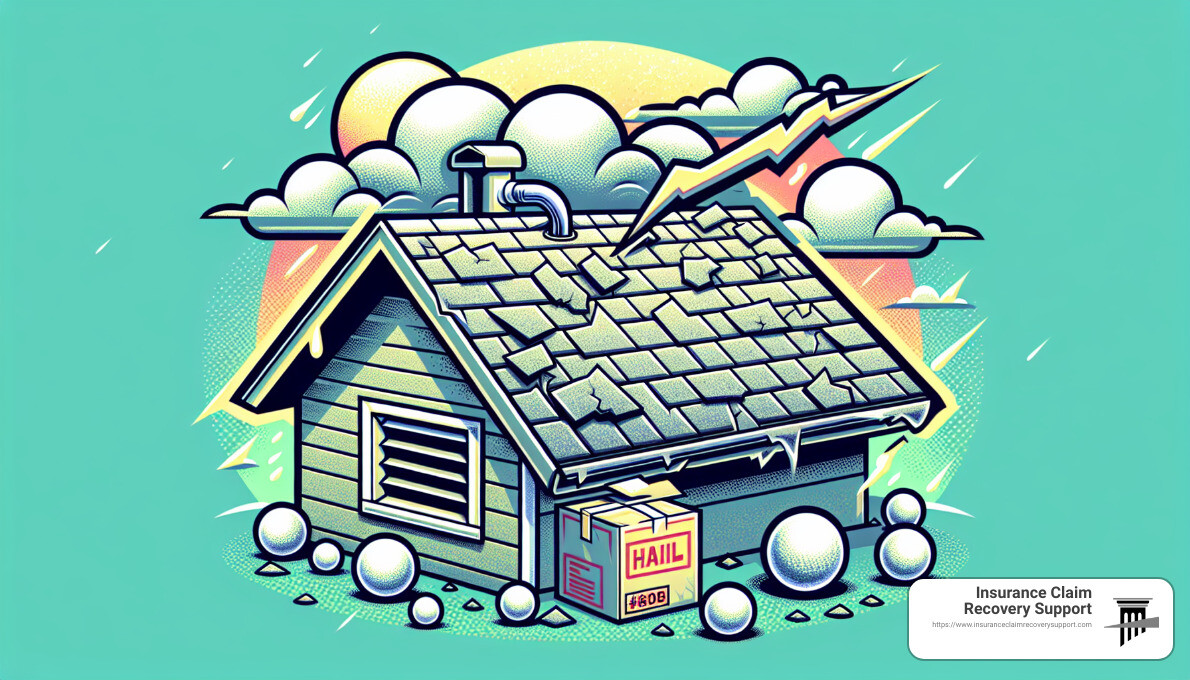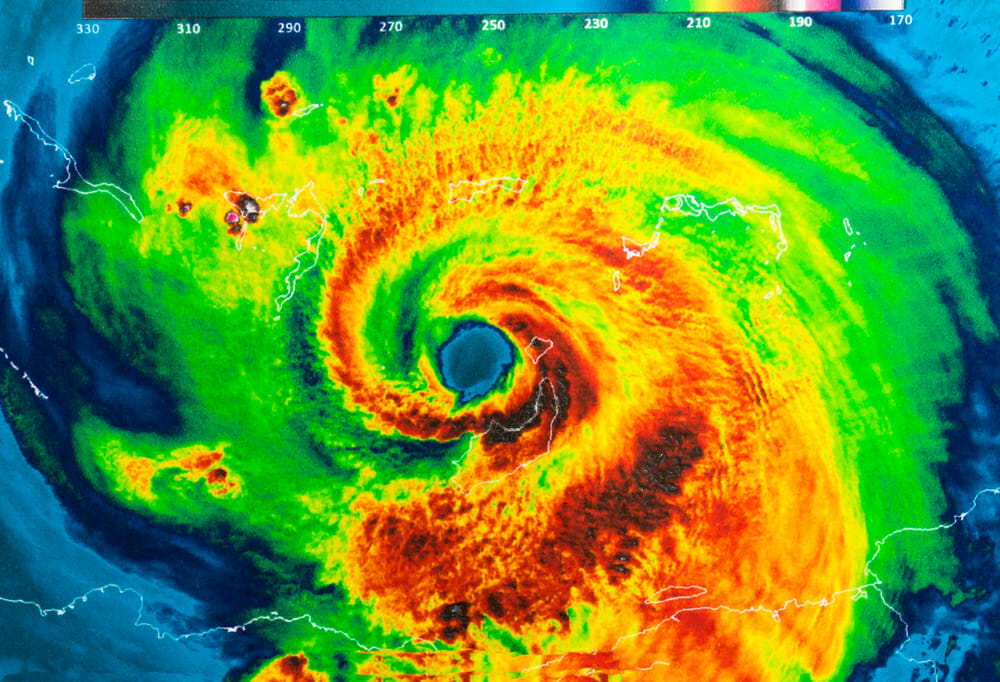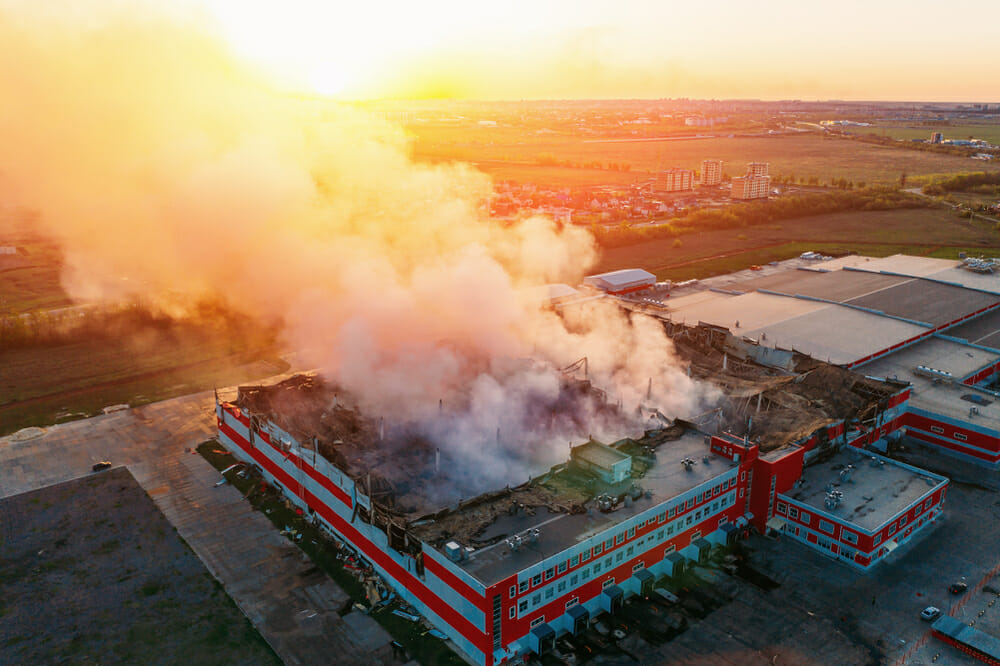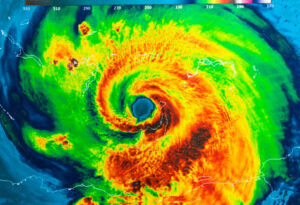Have you ever wondered, “What is the average insurance payout for hail damage roof?” If you’re a commercial or residential property owner, this question may come to mind, especially following a severe weather event. At Insurance Claim Recovery Support, we understand your concerns. Navigating the complex world of insurance claims after hail damage can be stressful, especially when you’re unsure of the potential reimbursement for repairs.
Insurance payouts for hail damage claims vary widely, with numerous factors influencing the final compensation. These can include your policy’s coverage limit, the extent of the damage, and even the geographic location of your property.
In the past year alone, the number of hail damage claims and the average claim amount has surged, creating an exceptionally challenging environment for policyholders. For example, the total payout for hail damage in 2022 increased by a staggering $1 billion as compared to the previous year. Interestingly, states like Minnesota, Texas, and Arkansas topped the list for the highest hail claims, with payouts for Minnesota surpassing $799M alone.
| Top States for Hail Claims in 2022 | Payout |
|---|---|
| Minnesota | $799M |
| Texas | $510M |
| Arkansas | $231M |
| Illinois | $225M |
| Nebraska | $212M |

Embarking on this informational guide, we will unpack the intricate factors pertaining to the average insurance payout for hail damage roof claims. Our aim at Insurance Claim Recovery Support is to alleviate your worries and assist you in understanding the process comprehensively. We’re here to help you navigate the complexities and ensure you receive a fair and prompt settlement for your hail damage claim.
Understanding Hail Damage and Its Impact on Roofs
Hailstorms can wreak havoc on your property, particularly your roof. Understanding the extent of the damage and what it means for your insurance claim is crucial to ensuring a fair outcome. At Insurance Claim Recovery Support, we’re here to help you navigate this process.
The Size of Hail and Its Potential for Damage
The size of the hailstones that strike your roof significantly influences the extent of the damage. While smaller hailstones can gradually wear down your roof over time, larger ones can cause immediate and substantial harm. Generally, hailstones need to be around 1” in diameter or bigger to cause significant damage to your roof. When hailstones of this size hit your roof, they can create dents and dings that compromise the integrity of your roof, particularly if it has asphalt shingles.
Identifying Signs of Hail Damage on Your Roof
Identifying hail damage on your roof is a critical step towards filing a successful insurance claim. The most obvious signs are dents and dings in your shingles. However, absence of large dents doesn’t necessarily mean your roof has escaped damage. Other common signs of hail damage include dings, dents, or splatter marks on your roof vents, gutters, roof flashing, and other roof penetrations.
For safety reasons, we strongly advise against climbing onto your roof to inspect for damage. Instead, check for signs of hail damage from the ground. Look for dents on your downspouts, garage door, window screens, painted wood, shutters, electric meter, AC unit, grill, and even your car. Finding these damages doesn’t confirm extensive roof damage, but it does give you an indication of whether a claim might be necessary.
The Impact of Hail Damage on Different Types of Roofing Materials
The type of roofing material on your property can also influence the extent of hail damage. For example, laminated, glass-fiber reinforced asphalt shingles are likely to suffer bruises and punctures from hailstones that are 1 -1/4 inch in diameter or larger. Hail impacts on a TPO roof system often result in tears and punctures or fractures of the single-ply membrane. Roof tiles can crack at the overlock corners due to the high kinetic energy of a hail impact. Polymer-modified bitumen membranes may puncture, tear, or bruise, reducing the membrane’s weatherproofing capability.
Understanding the impact of hail on your specific roofing material is crucial in assessing the damage and estimating the average insurance payout for hail damage roof claims. We at Insurance Claim Recovery Support are here to guide you through this process and ensure you receive the compensation you deserve.
The Role of Homeowners Insurance in Covering Hail Damage
Homeowners insurance is designed to protect your home against many different types of perils, including hail damage. Yet, understand precisely what your policy covers and what it does not. Some policies include specific exclusions or limitations related to hail damage, particularly in areas prone to frequent hail storms.
Typical Coverage for Hail Damage in Homeowners Insurance Policies
Generally, homeowners insurance covers hail damage to the structure of your home, including the roof and siding. The dwelling and personal property sections of your policy will help cover the cost of replacements or repairs if your home or belongings are damaged in a hailstorm. However, in areas where hail storms are more common, there may be certain stipulations to your coverage as it applies to hail damage.
It’s important to review your policy carefully and discuss it with your insurance agent or a public adjuster to understand your coverage thoroughly.
The Difference Between ACV and RCV Policies in Hail Damage Claims
When it comes to the payout for hail damage claims, it’s critical to understand the difference between Actual Cash Value (ACV) and Replacement Cost Value (RCV) policies.
An ACV policy provides a payout for the depreciated value of your hail-damaged roof. This means you’ll only receive a payout for what your roof is worth at the time of the hail damage claim, which may not be enough to cover the full cost of a new roof. On the other hand, an RCV policy provides a payout to replace your roof with a brand-new version of itself. This means your insurance company should cover the full cost of your roof replacement.
Policy Exclusions and Restrictions for Cosmetic Roof Damage
Insurance companies have developed several strategies to limit their losses in regions where severe wind and hailstorms are common. One such strategy is the exclusion of cosmetic damage. If your policy includes this exclusion, damage that affects only the appearance but not the function of your roof, siding, windows, doors, or any other part of your home may not be covered.
For instance, if your roof is more than 15 years old, some insurers may only pay out the actual cash value of your damaged roof. Besides, insurance companies often offer separate wind and hail deductibles to residents in hail-prone parts of the country. You’re responsible for paying this deductible before your insurance company will cover a claim.
At Insurance Claim Recovery Support, we understand these complexities and are here to help guide you through the process. Our goal is to ensure that you receive a fair and accurate settlement for your hail damage claim.
The Process of Filing a Hail Damage Insurance Claim
After experiencing hail damage to your roof, know the steps involved in filing an insurance claim. Your goal is to receive the average insurance payout for hail damage roof claims or possibly more, depending on the extent of the damage. At Insurance Claim Recovery Support, we’re here to guide you through each step.
The Importance of Prompt Reporting and Filing of Hail Damage Claims
The first step is to report the hail damage to your insurance company as soon as possible. Most insurance companies require that claims be filed within a certain time frame, which is usually within one year from the day of the hail storm. Prompt reporting allows your insurer to begin the claims process immediately.
Documenting the Damage: What to Include in Your Claim
Thorough documentation is key to a successful hail storm damage insurance claim. Start by taking clear pictures of the damage before you make any temporary repairs. Capture images of hailstones next to a ruler or coin for size reference. Also, keep all damage-related invoices, billing statements, and receipts as they can provide valuable proof for your claim.
Dealing with Insurance Adjusters: What to Expect
After your claim has been submitted, your insurance company will assign an adjuster to your case. This person will inspect the damage to your property and assess the overall cost of repairs. It’s crucial to have documented the damage thoroughly and to have repair estimates from trusted local contractors.
Insurance adjusters work for the insurance company, and it’s in their best interest to minimize the payout. Be present during the adjuster’s inspection and point out all areas of damage. If possible, have your roofing contractor present as well to ensure no damage is overlooked.
Hiring a Contractor for Repairs: What to Consider
Once your claim has been approved, you can hire a contractor to repair your roof. However, it’s important to provide your insurer with proof of repair or replacement. This is usually in the form of invoices and receipts from your contractor. This documentation is essential for ensuring you receive the full payout from your insurance company.
Choosing a reliable, licensed contractor is crucial. It might be beneficial to get several quotes to get a clear idea of what the repair costs will be. Also, avoid signing a contract for repair work until after your insurance adjuster has assessed the damage.
With these steps, you’ll be well on your way to securing the average insurance payout for hail damage roof claims. At Insurance Claim Recovery Support, we’re committed to standing up for policyholders and advocating for their rights. Our years of experience and expertise enable us to effectively navigate the complexities of the insurance claim process and secure the best possible settlement for our clients.
Average Payout for Hail Damage Roof Claims
Understanding the average insurance payout for hail damage roof claims can help you set realistic expectations when filing a claim. However, bear in mind that the payout can vary significantly based on several factors, including your policy type, the extent of the damage, and your location.
The Average Payout for Hail Damage Claims in 2021
As per data gathered by the Insurance Information Institute in 2021, the average payout for wind and hail home insurance claims was close to $12,000. This figure, however, can vary widely as it depends on multiple factors such as the type of coverage you have, the extent of damage, and your policy’s deductible.
Factors That Influence the Payout Amount
Several factors can influence the average insurance payout for hail damage roof claims. Firstly, the extent of the damage plays a significant role. For example, minor damage might not meet the deductible, resulting in no payout. Meanwhile, extensive damage could potentially lead to a full roof replacement, increasing the payout.
Your insurance policy type is another critical factor. Actual cash value (ACV) policies will only payout the roof’s current value minus depreciation, while replacement cost value (RCV) policies will cover the total cost of a new roof, less your deductible. There’s a considerable difference in payouts between these policy types.
Finally, your claim’s success can be influenced by your maintenance of the roof, the age of the roof, and your ability to provide detailed documentation of the damage.
How Location Affects the Average Payout for Hail Damage Claims
Location plays a key role in determining the average insurance payout for hail damage roof claims. Some states are more prone to hail damage than others. For example, in 2022, Minnesota had the highest hail damage claims with $799 million, followed by Texas with $510 million.
In regions where hailstorms are common, insurance companies might pay out larger claims due to the frequency and severity of hail damage. However, they might also increase premiums to offset the higher risk.
Knowing these factors can help you understand the potential payout you might receive for hail damage to your roof. At Insurance Claim Recovery Support, we believe in fair compensation for policyholders. We’re here to help you navigate the complexities of the claim process, ensuring your claim is properly assessed and that you receive a fair settlement.
The Impact of Hail Damage Claims on Your Insurance Premiums
One of the primary concerns of policyholders after experiencing hail damage to their roofs is the potential impact on insurance premiums. Will filing a claim cause an increase in your premiums? Let’s delve into this concern.
How Filing a Hail Damage Claim Can Affect Your Premiums
Hail damage is typically considered an Act of God event, meaning it’s a natural occurrence that is beyond human control. Because of this, most insurance companies will not increase your premiums due to a single hail damage claim. This is because the damage wasn’t caused by negligence or lack of maintenance on your part.
However, it’s not always so straightforward. If you’ve filed another home insurance claim within the past three years, your premiums might increase after a second claim, regardless of the reason. This is a standard practice among many insurance providers to offset the risk associated with multiple claims.
When to File a Claim: Balancing the Cost of Repairs and Potential Premium Increases
Deciding when to file a claim for hail damage is a careful balancing act. On one hand, you need to ensure that your home is promptly repaired to prevent further damage. On the other hand, you must consider the potential impact on your insurance premiums.
Here are some steps to help you make a decision:
- Understand your deductible: Know how much you’ll need to pay out-of-pocket before your insurance coverage kicks in. If the cost of repairs is less than your deductible, it might not be worth filing a claim.
- Evaluate the extent of damage: If the hail damage is minor and doesn’t pose a risk for further damage, it might make more financial sense to pay for the repairs out-of-pocket rather than filing a claim.
- Consider your claim history: If you’ve filed another claim in the past three years, be aware that filing a second claim could potentially increase your premiums.
At Insurance Claim Recovery Support, we understand that filing a hail damage claim can be a complex process. We’re here to guide you through each step, ensuring that you receive the fair and prompt settlement you deserve, while also helping you understand and navigate potential changes to your premiums.
How Insurance Claim Recovery Support LLC Can Help with Your Hail Damage Claim
Navigating the complexities of a hail damage insurance claim can be overwhelming. That’s where we come in. At Insurance Claim Recovery Support, we offer expert guidance and advocacy to help you through each step of the process.
The Role of a Public Adjuster in Hail Damage Claims
A public adjuster plays a pivotal role in the insurance claim process. They are professionals who are skilled in identifying and documenting damage, understanding the terms of your insurance policy, and negotiating a fair settlement. They are your advocates, ensuring you receive the compensation you rightfully deserve without falling prey to common insurance company underpayment tactics.
In the wake of a hail storm, a public adjuster is incredibly valuable. They can help you accurately document all damage, which is a critical step in filing your claim. They can also speak with insurance adjusters on your behalf, ensuring that no damage is overlooked and that your claim is fairly valued.
How Insurance Claim Recovery Support LLC Advocates for Policyholders
We are committed to advocating for policyholders. We understand that dealing with hail damage can be stressful, but you don’t have to face the aftermath alone. Our team of public adjusters is dedicated to standing up for your rights, navigating the complexities of the insurance claim process, and securing the best possible settlement for you.
We work tirelessly to ensure that each policyholder receives a fair and prompt settlement. If you feel your claim is being unjustly denied or underpaid, we will help you appeal and fight for what you rightfully deserve.
Success Stories: Maximizing Settlements for Hail Damage Claims
Our track record speaks for itself. We’ve worked with countless policyholders, helping them successfully navigate their hail damage claims and achieve fair settlements. While we can’t disclose specific client information due to confidentiality, we’ve successfully managed a wide range of hail damage claims, turning a stressful situation into a manageable one for our clients.
In conclusion, we believe that each policyholder deserves a fair and prompt settlement. If you’re dealing with hail damage, remember you’re not alone. Insurance Claim Recovery Support is here to help, ready to fight for your rights as a policyholder and ensure you receive the average insurance payout for hail damage roof or even more.
Contact us today for a free case review.
Conclusion
Dealing with hail damage and navigating the complexities of the insurance claim process can be an overwhelming task. However, as we have shown in this guide, understanding the process, the factors that influence the average insurance payout for hail damage roof claims, and your rights as a policyholder can significantly alleviate this burden.
The timelines for filing a claim, the type of policy you have (ACV or RCV), and the area where you live can influence the payout you receive. It’s also important to understand that while hail damage claims may have an impact on your insurance premiums, this is often mitigated if hail damage is frequent in your area.
At Insurance Claim Recovery Support, we are dedicated to helping you navigate the insurance claim process, ensuring that you receive the maximum payout you’re entitled to. Our team has a proven track record, successfully negotiating with insurance companies to increase payouts for our clients.
Moreover, we believe in equipping you with knowledge and resources to better protect your property from future hailstorms. Investing in protective measures, maintaining regular property maintenance, and conducting routine inspections can mitigate potential damage and subsequent insurance claims.
When you’re dealing with hail damage, you’re never alone. We are here to help and fight for your rights as a policyholder. Reach out to us today for a free case review and let us help you get the fair and prompt settlement you deserve.
In the end, the goal is a fair outcome that covers your repair or replacement costs and sets you on a path to recovery. After all, your property is more than just a building; it’s a significant investment and a place you call home.
With proper guidance, careful planning, and strategic negotiation, you can navigate the hail damage insurance claim process with confidence, ensuring you receive the compensation you are entitled to. We’re here to support you every step of the way.







